ESCAPE
Deelfontein Siding – Once a massive military field hospital in the Karoo veld
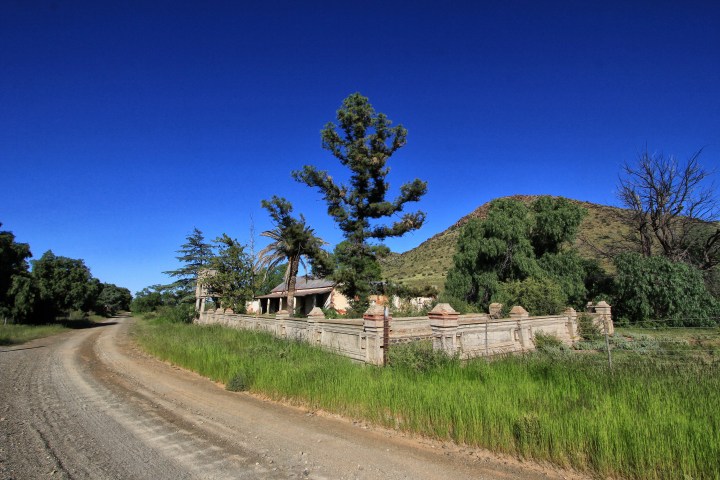
Within the first few months of 1900, mid-war, Deelfontein has been transformed. A massive tent town has sprung up, with the kind of medical centre the present-day Karoo’s little dorpies can only dream of having.
We leave the little Northern Cape settlement of Richmond as the first morning rays begin to tickle the steeple of the Moederkerk in the main road, and drive west on dirt roads, following the signs to De Aar and Merriman. Our mission for today is to look at what’s left of Deelfontein, once a railside settlement that bustled with the cacophony of matters of war: troop trains leaving, hospital trains arriving, mounted regiments passing through with news from afar, daily traffic in the massive tent city and the occasional outflow of celebration from the officers’ mess.
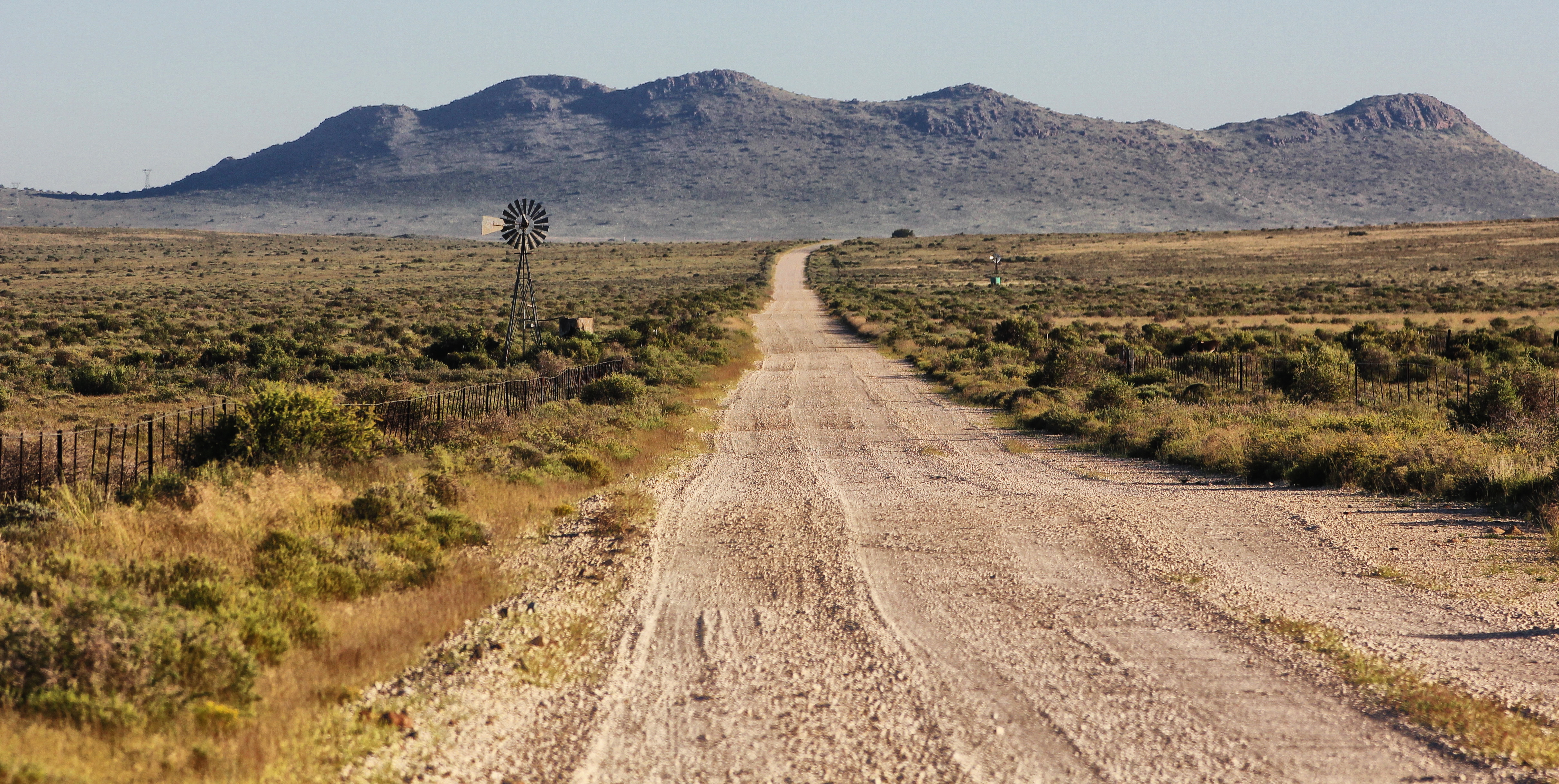
The road to Deelfontein, a deserted railway siding between Richmond and De Aar. Image: Chris Marais
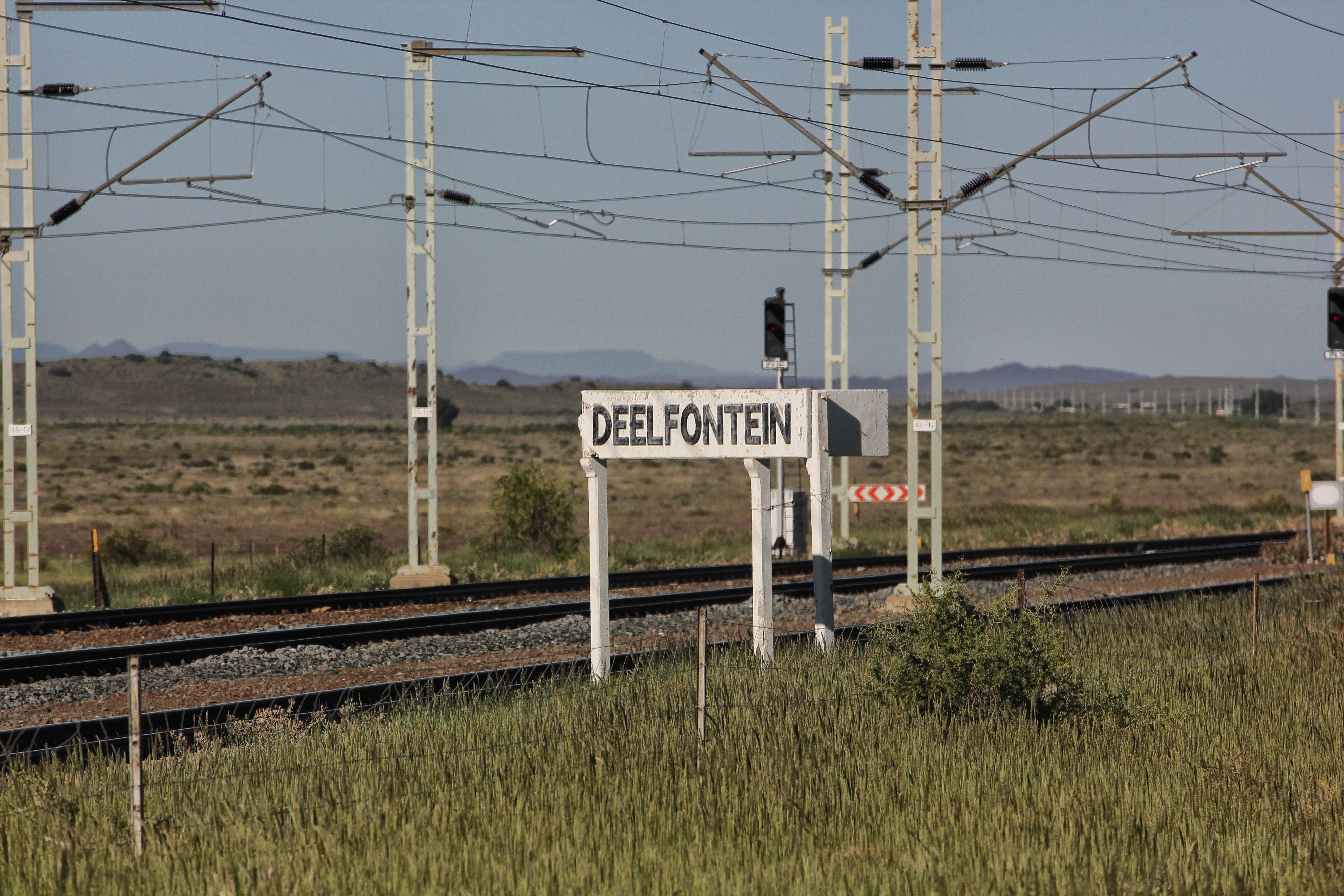
Deelfontein Siding – once a hive of military activity as battlefield casualties were dropped off at the military field hospital. Image: Chris Marais
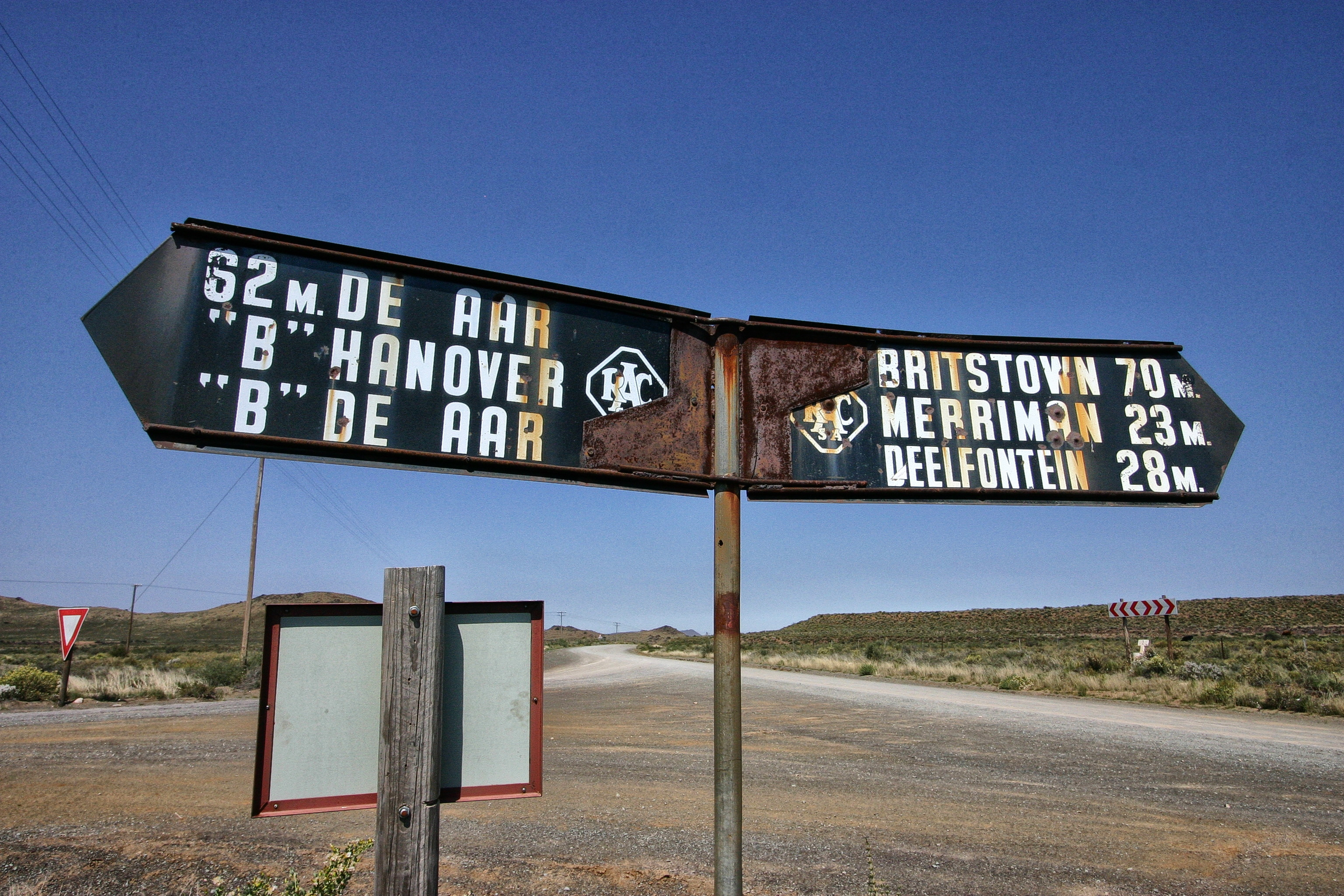
One of the oldest remaining roadsigns in the Karoo – the Deelfontein crossroad. Image: Chris Marais
We were last here 10 years ago. All we saw were ruins, a graveyard full of dead soldiers, and a rather grand old hotel portico. I remember most the setting of the day: clumps of new daisies, blonde veld grass, succulents near the railway line, angry owls in the hotel dining room, and blue cranes rising in a kind of Mexican-Karoo wave across a clear winter sky.
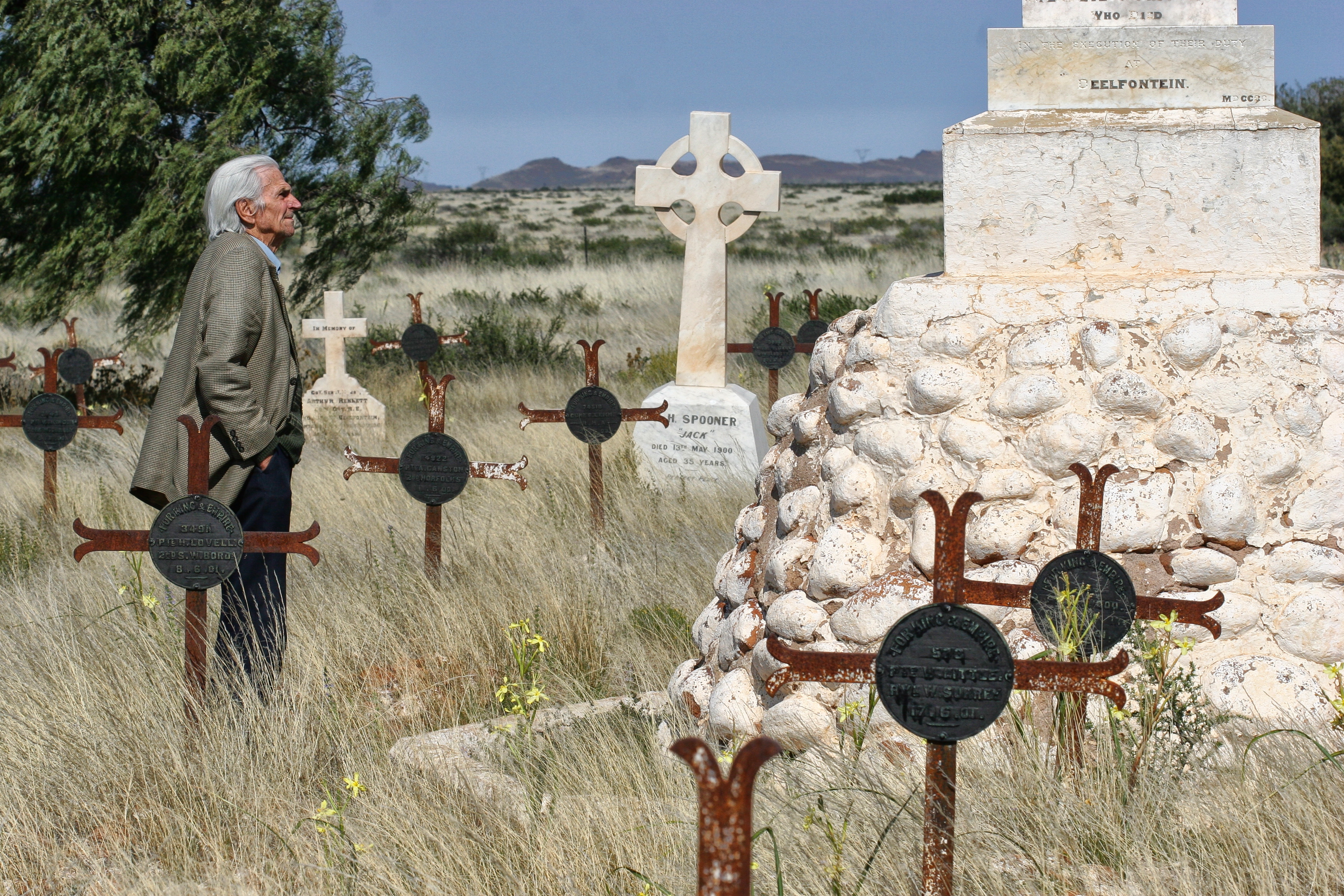
The late Percy Moss, lost in memories at the Deelfontein cemetery. Image: Chris Marais
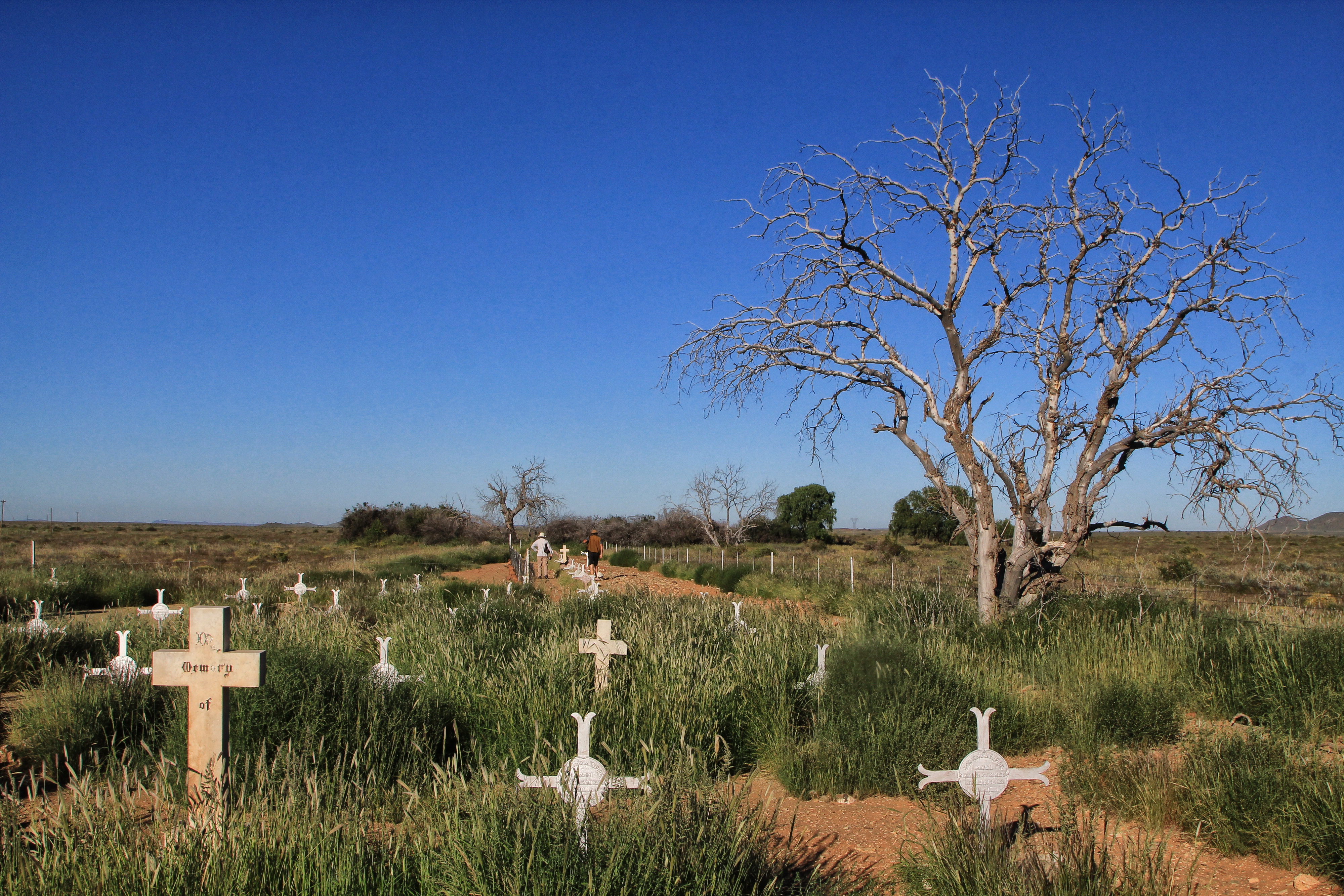
Few visitors come to Deelfontein Siding these days, where the Karoo is reclaiming the hospital site. Image: Chris Marais
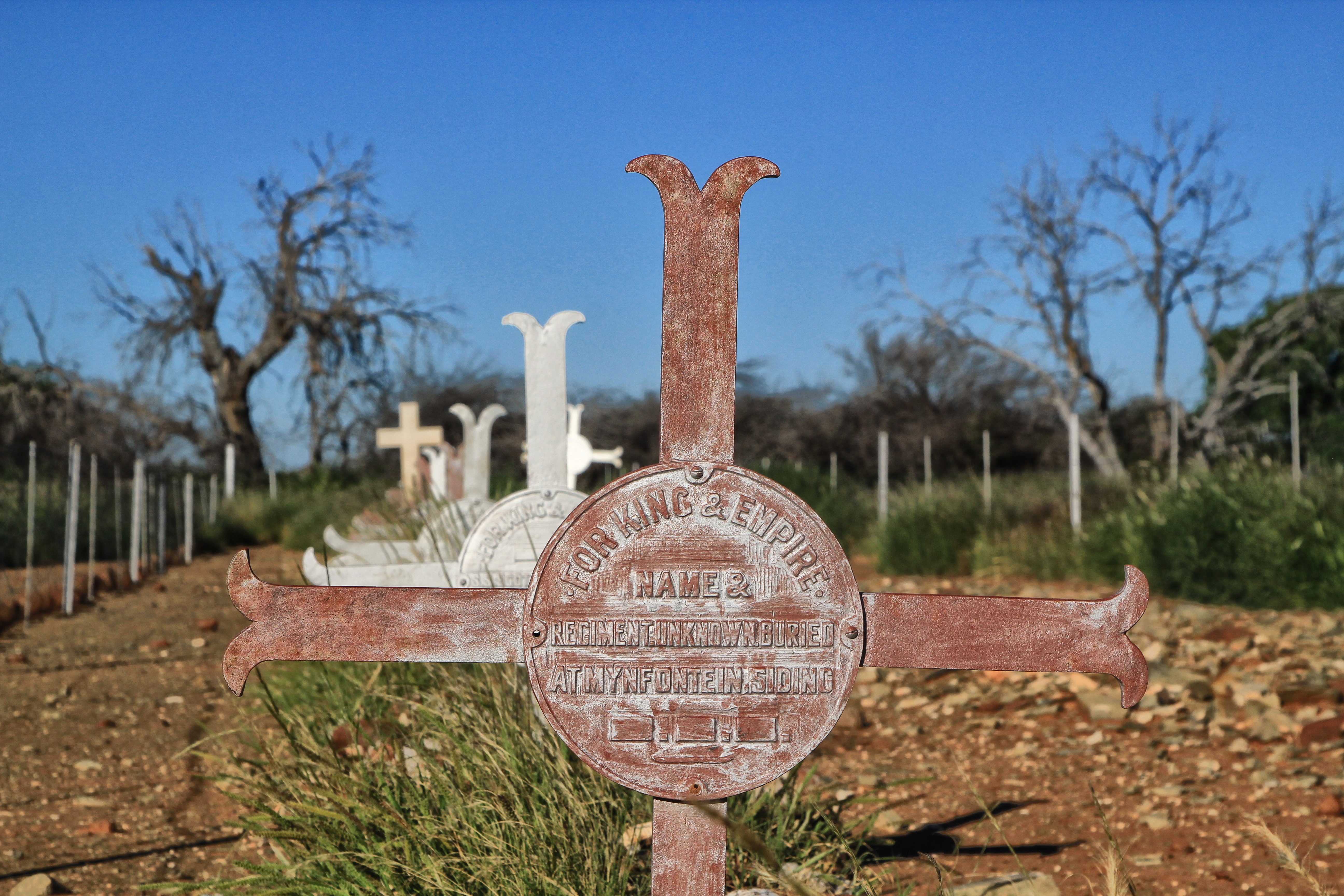
The last signs of the British Empire could one day be a forgotten British grave in the Karoo. Image: Chris Marais
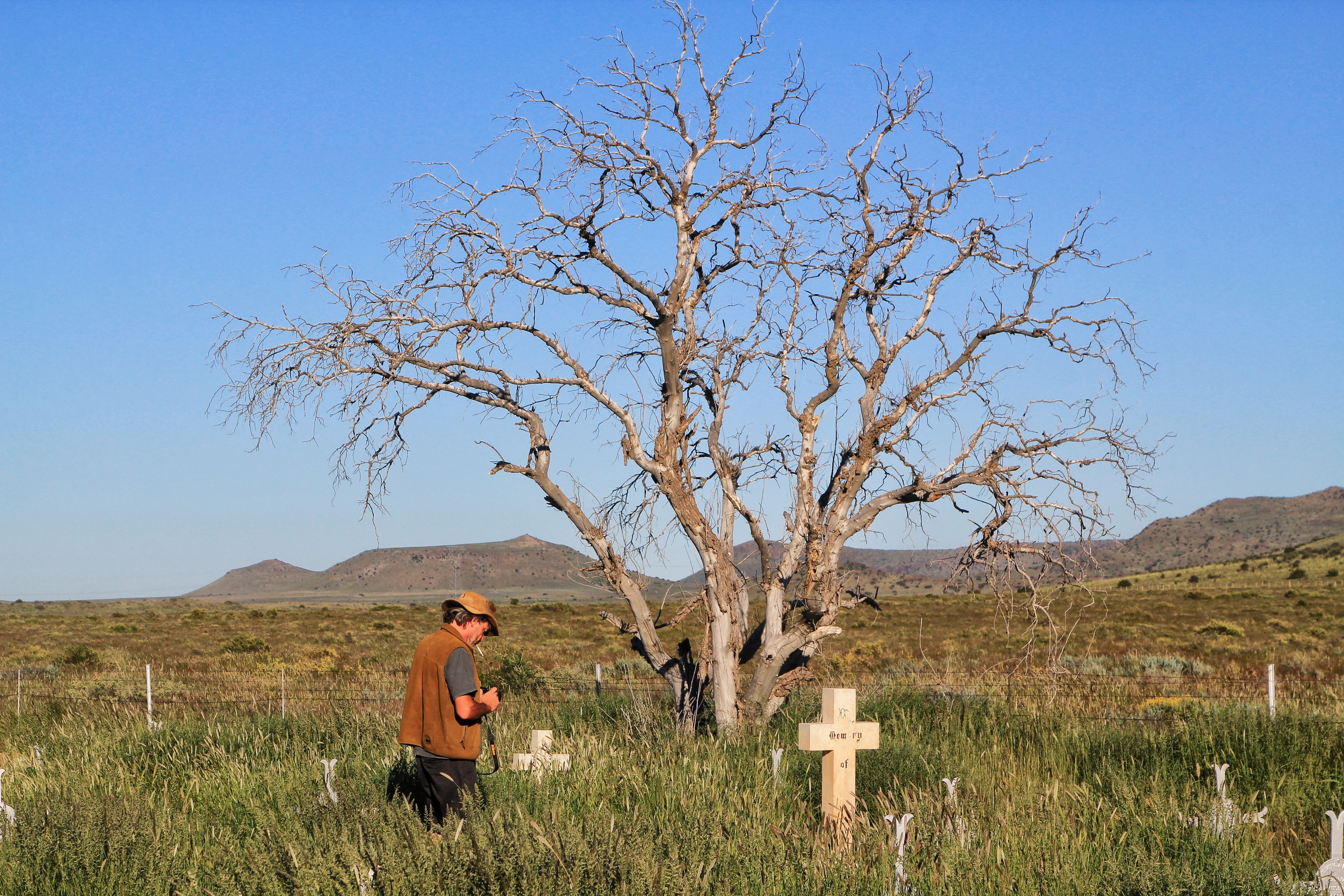
One of the skeletal trees that stand guard over the Deelfontein gravesite. Image: Chris Marais
If you know nothing of the backstory of a place, you might as well be half-blind.
The Imperial Yeomanry
This time it’s different. I leave my camera for now and take a seat on a rock at the foot of the hill. Besides the scratch of my wife’s pen on her notebook and the plaintive, rising whistle of a clapper lark, it’s as peaceful as can be.
Suddenly I’m back in 1899, during the Black Week of December 10-17. The thinly stretched colonial forces of the British Army have just lost nearly 3,000 men in the defeats of Stormberg, Magersfontein and Colenso. They are currently no match for the Boers. It’s time to recruit a better class of British soldiers. The call goes out for “eight thousand men who can ride well and shoot straight” in order to overcome the veld skills of the South African farmers.
A new cavalry force, the Imperial Yeomanry, comes into existence. During the course of this bitter colonial war, more than 35,000 men join the 177 Imperial Yeomanry companies. Although some are ill-trained and turn out to be “incompetent, cowardly and drunk”, in the main they are young, fit, sharp-eyed horsemen.
A small group of British high society led by Ladies Chesham and Curzon make an impassioned appeal via the newspapers to the British public and raise nearly 175,000 pounds. That’s big money for its time – enough to set up four hospitals with building materials, equipment and all personnel needed.
Tent town in the Karoo veld
There will now be a hospital for wounded and sick Yeomanry soldiers in South Africa, staffed by a handpicked selection of top doctors and medical personnel.
The site of the new hospital is a spot in the Karoo veld next to a railway siding called Deelfontein, not far from De Aar and near enough to the theatre of war to be accessible by train. Within the first few months of 1900, Deelfontein has been transformed.
A massive tent town has sprung up. It’s the kind of medical centre we in the present-day Karoo can only dream of having in our dorpies.
There are operating theatres, recuperation wards, an X-ray hut, a dental unit, an ophthalmology section, a dispensary, a fire station, stables, street lights, waste disposal units, filtered drinking water, an ice-making machine, and a therapeutic “Russian bath”. Eventually, there are 15 ward buildings, each named after one of the donor organisations. The entrance to each ward is named after a particular donor individual, as is each one of the available beds. If you gave money to the Deelfontein cause, you would know exactly where it was being spent.
There is monogrammed Imperial Yeomanry crockery, there are gardens, a playhouse where The Prude’s Progress is one of the productions, a horse racing track, a cricket field, and tennis courts. They even race meerkats for money in the officers’ mess!
A great book
I know all this not because I’m some kind of history buff. I am sitting on a rock in the veld in the winter sun with an excellent book on Deelfontein called Yeomen of the Karoo, authored by Rose Willis, Arnold van Dyk and JC “Kay” de Villiers.
I normally get very confused with books on the Anglo-Boer War, often referred to these days as the South African War. This battle, that skirmish, this victory, that defeat, this treaty, that betrayal and suddenly we’re up in the endless mopane forests of the Far North with Breaker Morant shouting at his execution squad:
“Shoot straight, you bastards!”
The various stages of this war embrace a lot of encounters and a very big piece of geography. Sometimes it can get confusing.
But Yeomen sets out the context both here and in the United Kingdom and then, without meandering, takes the reader into the well-curated and told minutiae of the Imperial Yeomanry Hospital at Deelfontein.
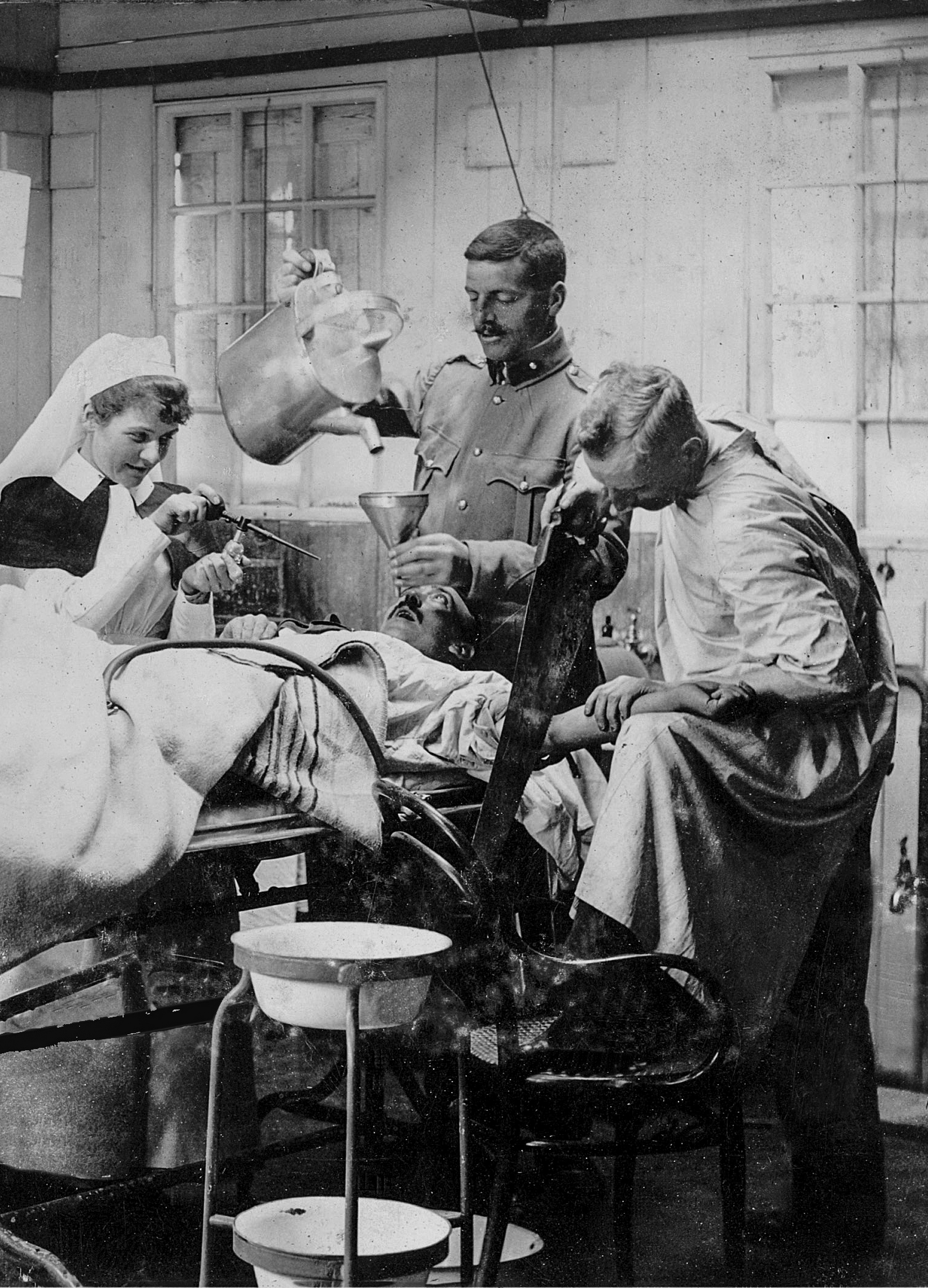
A posed photograph of an operation in progress at a hospital theatre in Deelfontein. Image: Courtesy of the Van Dyk ABO Trust Collection
Concerts in the Officers’ Mess
I read the account of one George McCarthy, who visits Deelfontein during a hectic British party to celebrate the lifting of the Siege of Mafeking.
After champagne, whisky and much feasting, the large group of men and women climb the koppie that looms over present-day me sitting on a rock. They build a huge bonfire and have a sing-song for 30 minutes. Then they descend, in the dark.
“I had the pleasure of escorting a lovely nurse down,” says George in a letter to a friend, “which I did without any broken bones to either of us. We then returned to the officers’ mess where we had an impromptu concert till the train arrived at 23:45 to take us back to De Aar.”
At the height of its one-year existence as the Imperial Yeomanry Hospital, Deelfontein had 800 patients and 200 staff. Excellent fund-raising back in the UK ensured a non-stop supply of essentials and not-so-essentials; the boxes of cigars, booze and chocolates that make the world go round when you’re lying sick or wounded in another man’s country.
Over a space of 12 months, more than 6,000 patients were treated at this five-star hospital in the veld. Of the 134 who died, 112 succumbed to typhoid – also known as enteric fever.
Critter racing
I’m dipping into Yeomen as the sun finally forces me into the shade of a nearby pepper tree. The authors have laced this book with so many gripping snippets that the graveyard in front of me seems to bustle with ghosts coming to wondrous life through a story well told.
One of the most eccentric Deelfontein treasures unearthed by the writers comes from a timeless report in a treasured publication called Animal Life and the World of Nature: A Magazine of Natural History throughout the World (1902):
“Sport in wartime would seem a paradox, and yet the average Britisher is so devoted to playing at something that, even amid the clash and din of war, he seizes the first available opportunity to get up a match of sorts. The 1st January, 1902, was a day long to be remembered in one of our largest military hospitals in South Africa.
“Deelfontein is about 30 miles south of De Aar Junction, out on the vast karroo in Cape Colony. Boer and Briton fraternised that day, and the farmers from far and near, many of them allied by ties of kin and sympathy with the enemy, failed not to accept the kindly invitation of Colonel A T Sloggett and his staff.
“Among the ‘events’ of a long and varied programme, quite the most interesting was the animals’ race. The gentle lamb and the swift ostrich, the dog and the wily jackal (three varieties), not to omit the small meer-kaat of the veldt, pitted their swiftness and endurance against each other for their own amusement and that of the white and black residents and visitors.
“Roars of laughter greeted the efforts of each owner to urge on his pet. The learned medico with his lamb (which persisted in stopping and gazing plaintively the other way), the brave hunter with his jackal, and the learned ‘padre’ driving his meer-kaat contributed fun indeed, with several others.
“Great was the applause when one of the jackals passed the ribbon, an easy first.”
The Yeomanry hotel
We drive down the road to what’s left of The Yeomanry, a once-classic Karoo hotel that was inspired by the Lord Milner in Matjiesfontein. Even here, the book in my day pack contains the good oil.
Elias Adamstein was a Karoo smous born along the border between Russia and Germany. En route into the Great Karoo, he chanced upon Matjiesfontein and met the innovative entrepreneur called Jimmy Logan. Elias was duly impressed by the man’s vision and drive. He became a significant ostrich breeder throughout the Karoo and Kalahari crossover regions. At Deelfontein, where he bought a farm, Adamstein built a general dealer and small hotel.
But Deelfontein Siding was seriously off the beaten track compared to Matjiesfontein, so the people who frequented Adamstein’s hotel (first named the Deelfontein Hotel and then the Yeomanry Hotel) were mainly local farmers, the odd prospector and some overland travellers passing by on the train or on horseback.
No matter. The hotel offered a five-star menu three times a day, there was a popular bar, a butchery, a unique water-softening system and bathrooms with hot and cold running water.
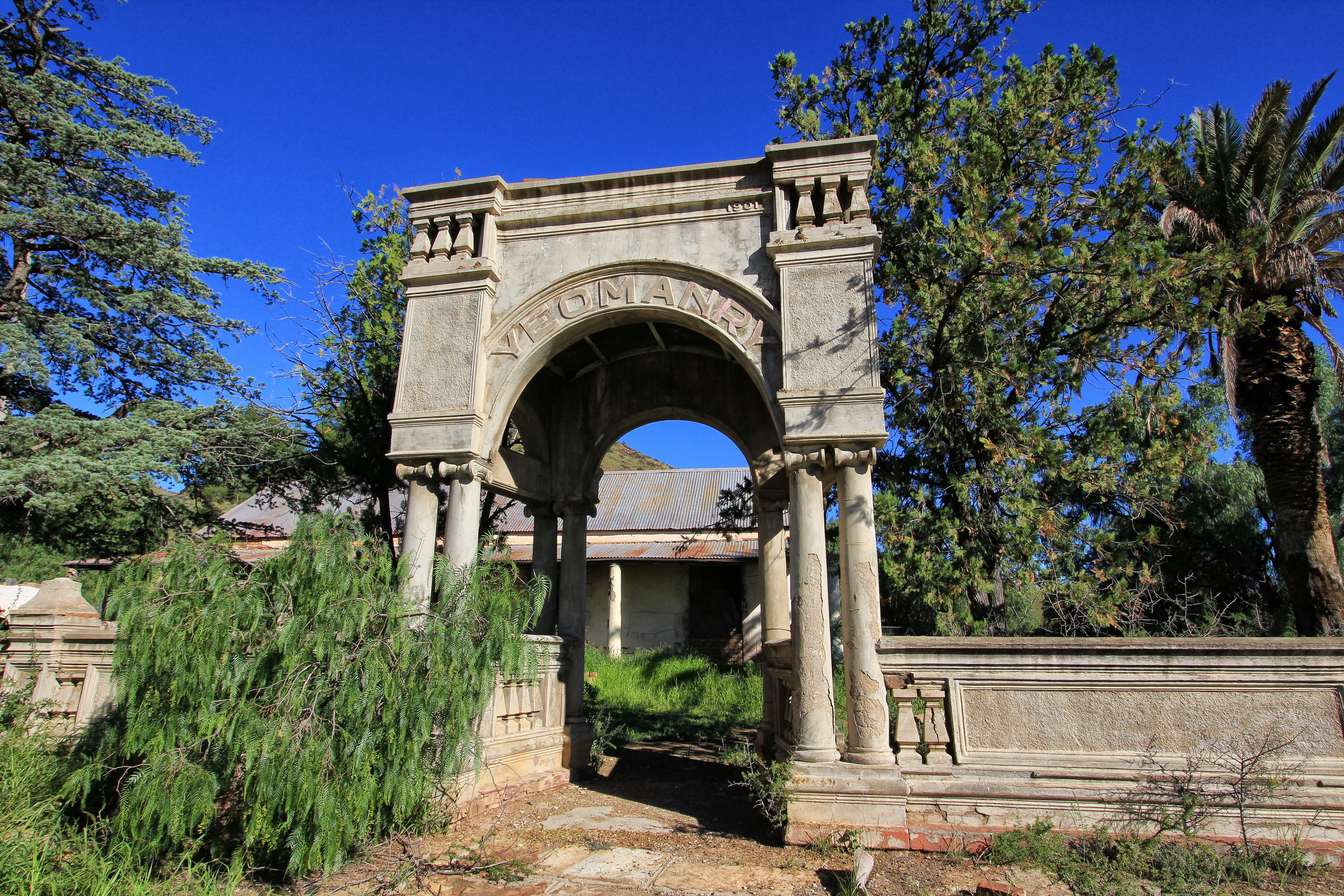
The most significant remaining ruin at the nearby Yeomanry Hotel: the welcoming portico. Image: Chris Marais
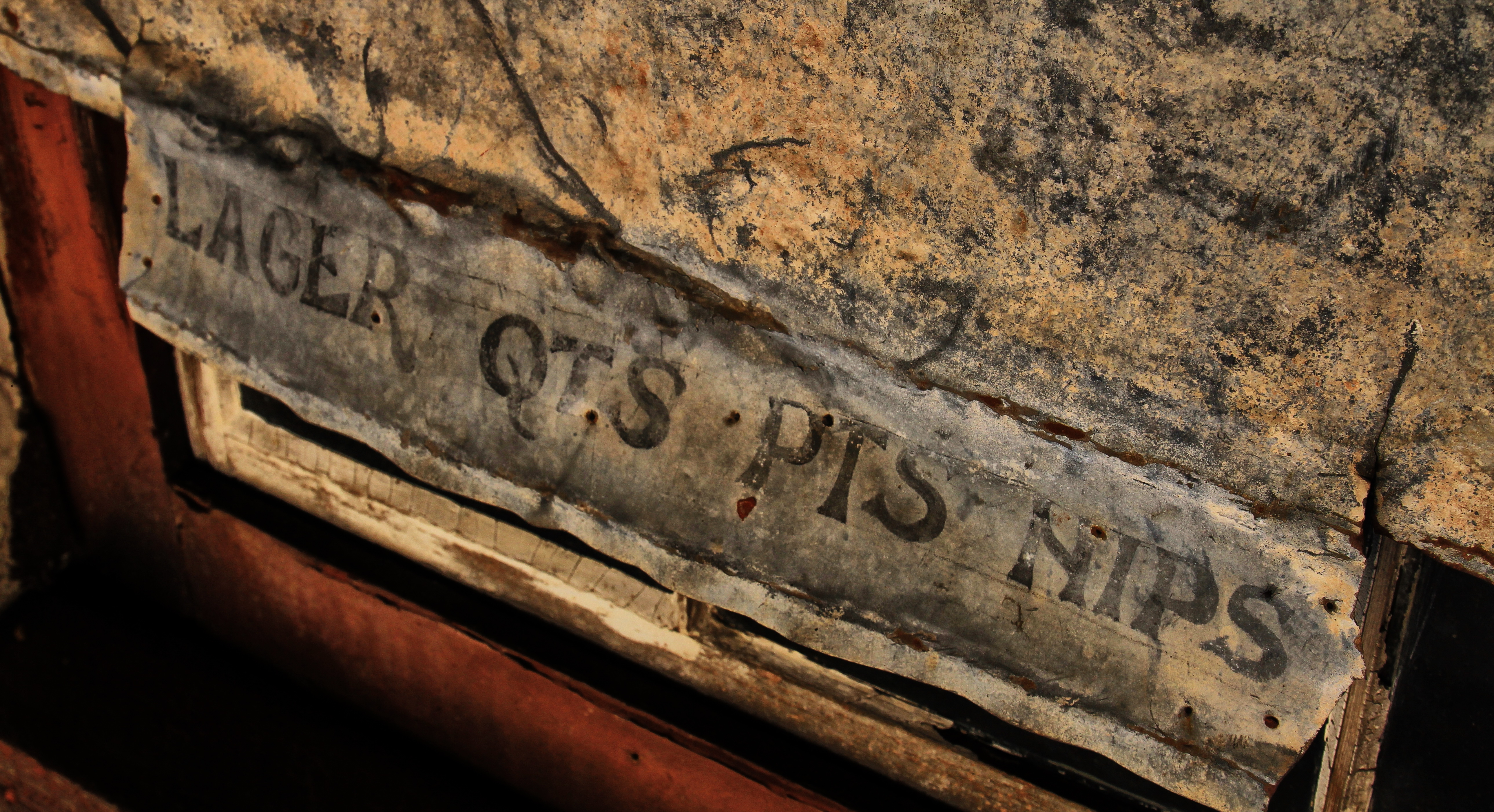
Fading drinks menu at the Yeomanry bar. Image: Chris Marais
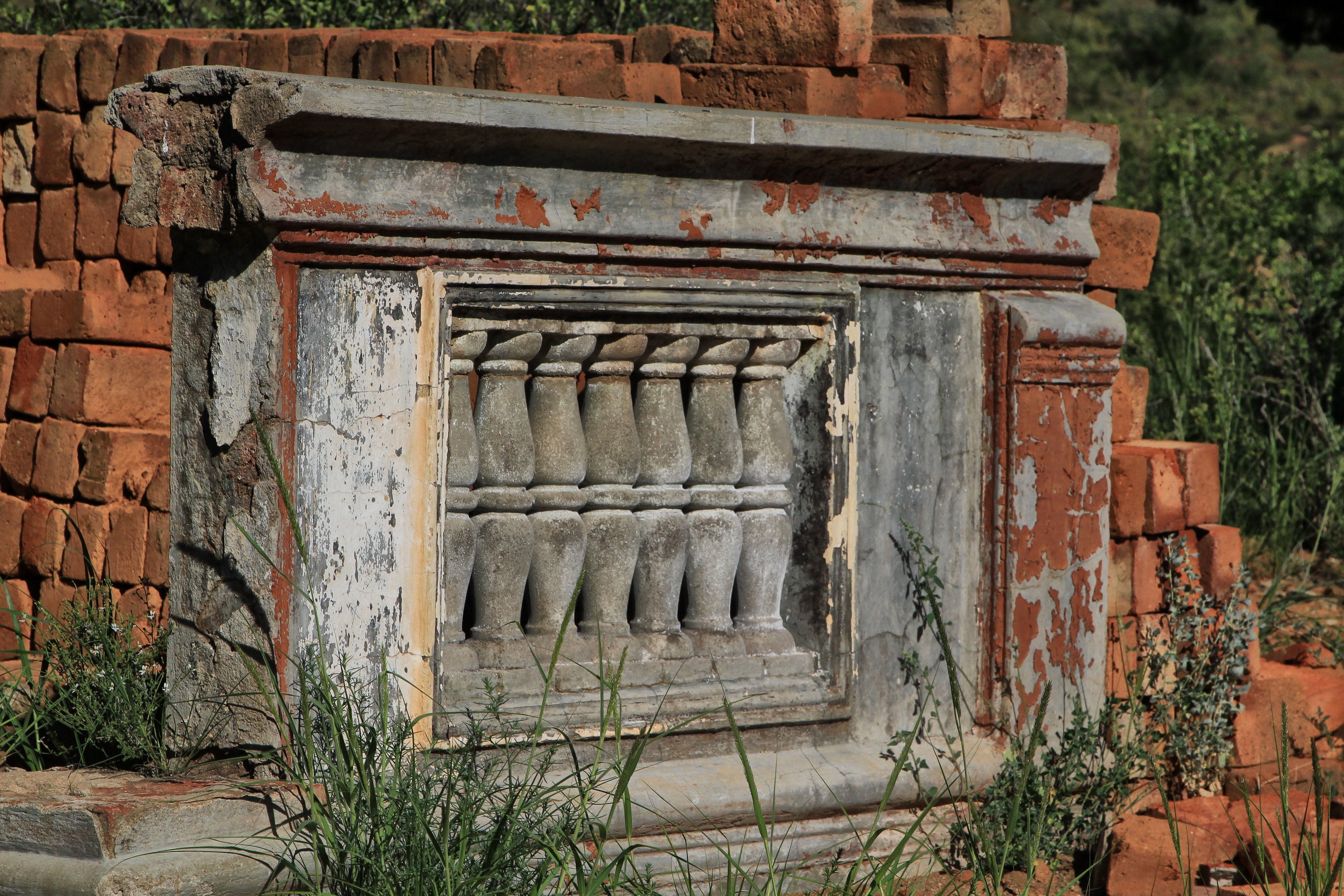
Here and there in the rubble one comes across an intact section of the old building. Image: Chris Marais
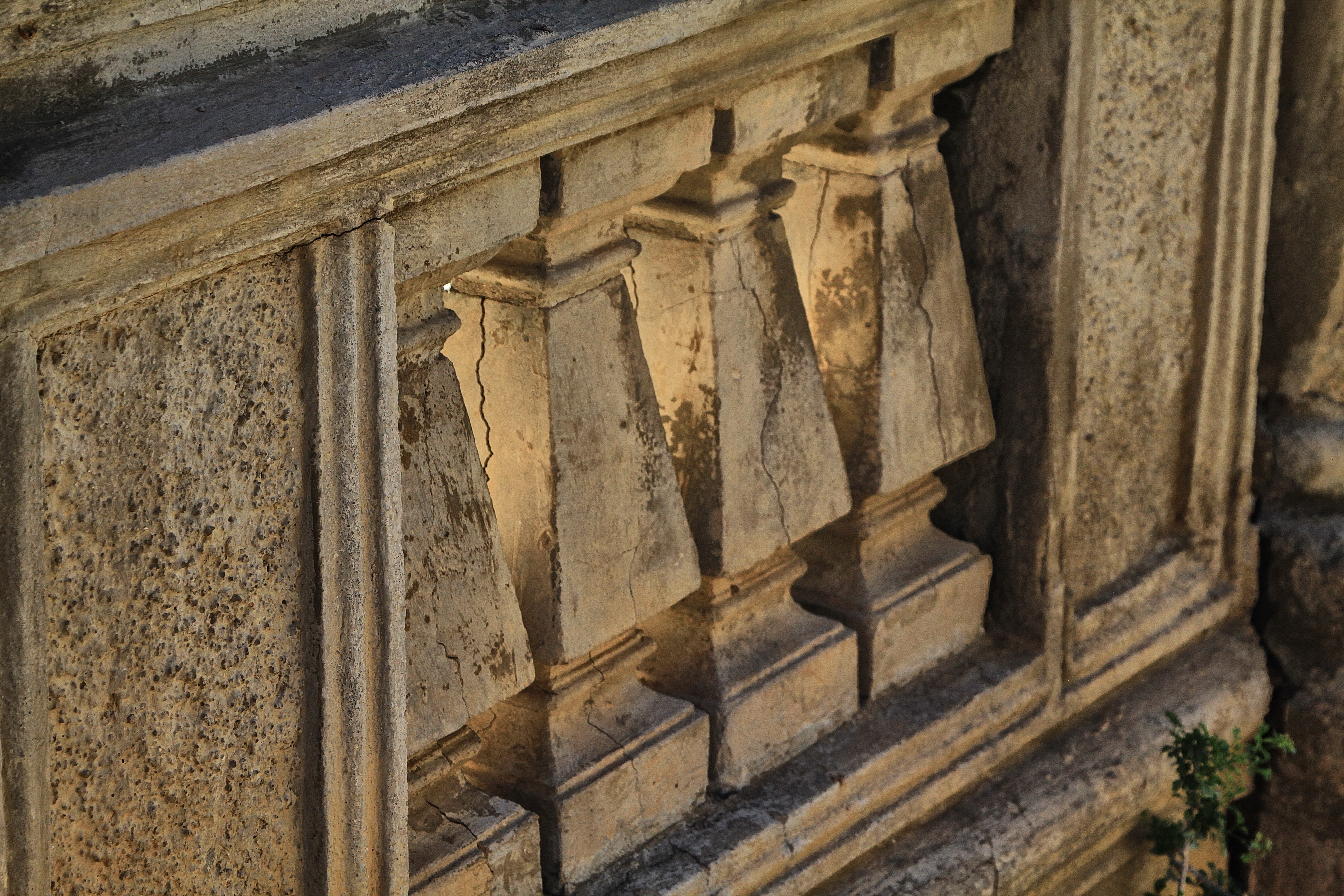
Remnants of the hotel porch. Image: Chris Marais
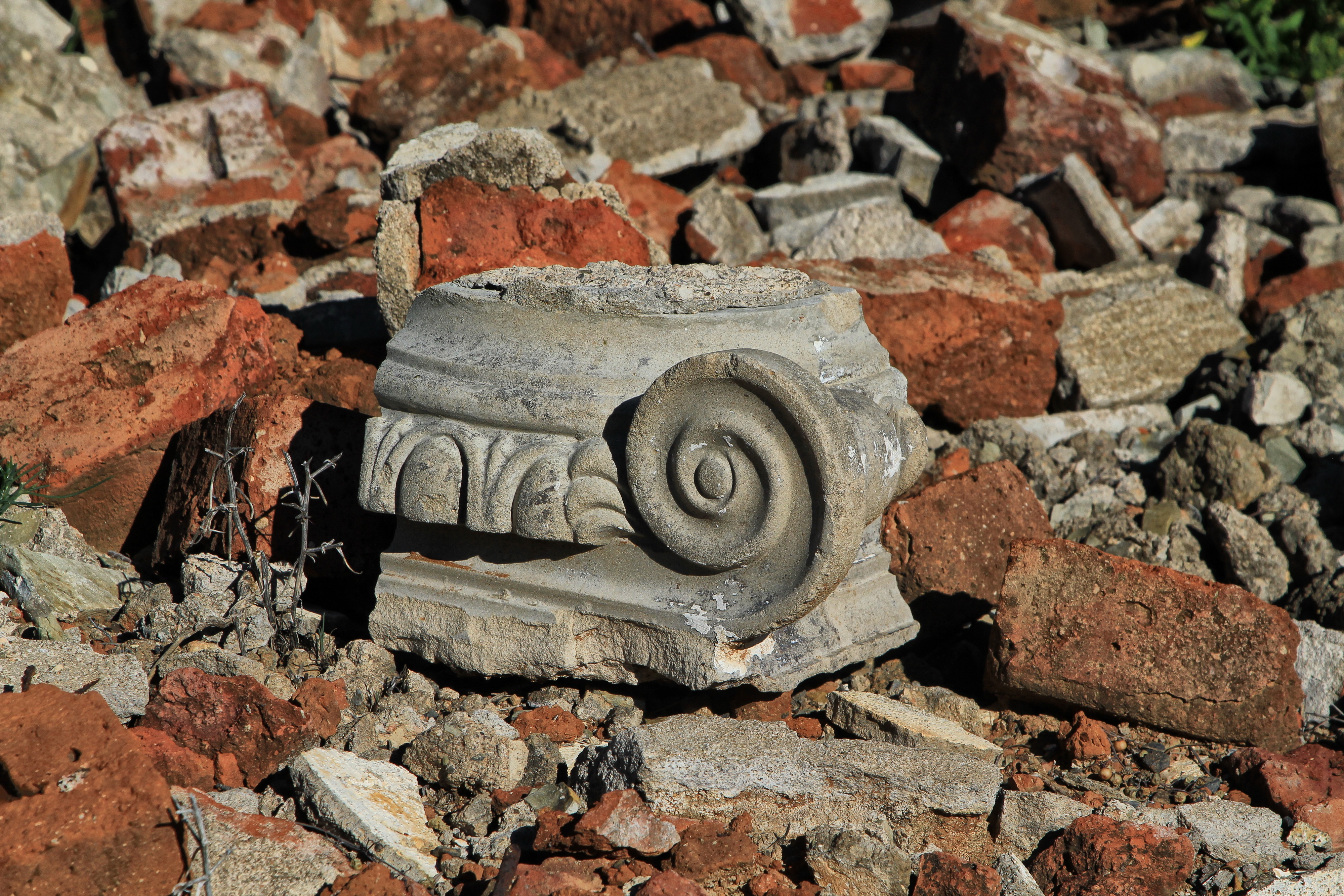
Part of one of the outside pillars lying in a pile of broken bricks. Image: Chris Marais
Ghosts of departed soldiers
One of Elias’ sons, Julius “JJ” Adamstein, eventually took over the management of the hotel, where he used to play his violin for recuperating soldiers.
“And on the days when there were no guests, when the lonely little hotel stood empty and only the ghosts of departed soldiers roamed the plains, the mournful, melancholic sound of Julius’ violin could be heard sighing plaintively across the Karoo veld,” say the authors.
The hotel remained open and in Adamstein hands, with JJ’s nephew Julius living alone in the “vast, empty hotel”.
As we prepare to depart this now-fascinating location, we notice a more modern ruin between the cemetery and the hotel. This was once the Deelfontein Post Office That Never Was, and Yeomen has the story:
“Locals say that one day a train arrived, off-loaded building supplies and puffed off. Intrigued, they wondered just who had ordered so much building material and why. Before they could even ponder the answer, a second train arrived and off-loaded some work crews.”
They built a post office (much like the hospital and the hotel, I guess) in the middle of nowhere. It turned out that the building had been meant for Dealesville, not Deelfontein. It never opened, and was subsequently stripped and vandalised.
A while later, the authors send me a selection of archived images taken from the book. One of them looks like a Monty Python sketch, with operating theatre staff pretending to amputate a patient’s limb.
Even in the dark times of war, the human spirit will find its lighter side. And that’s one of my take-away lessons from a day at Deelfontein. DM/ML
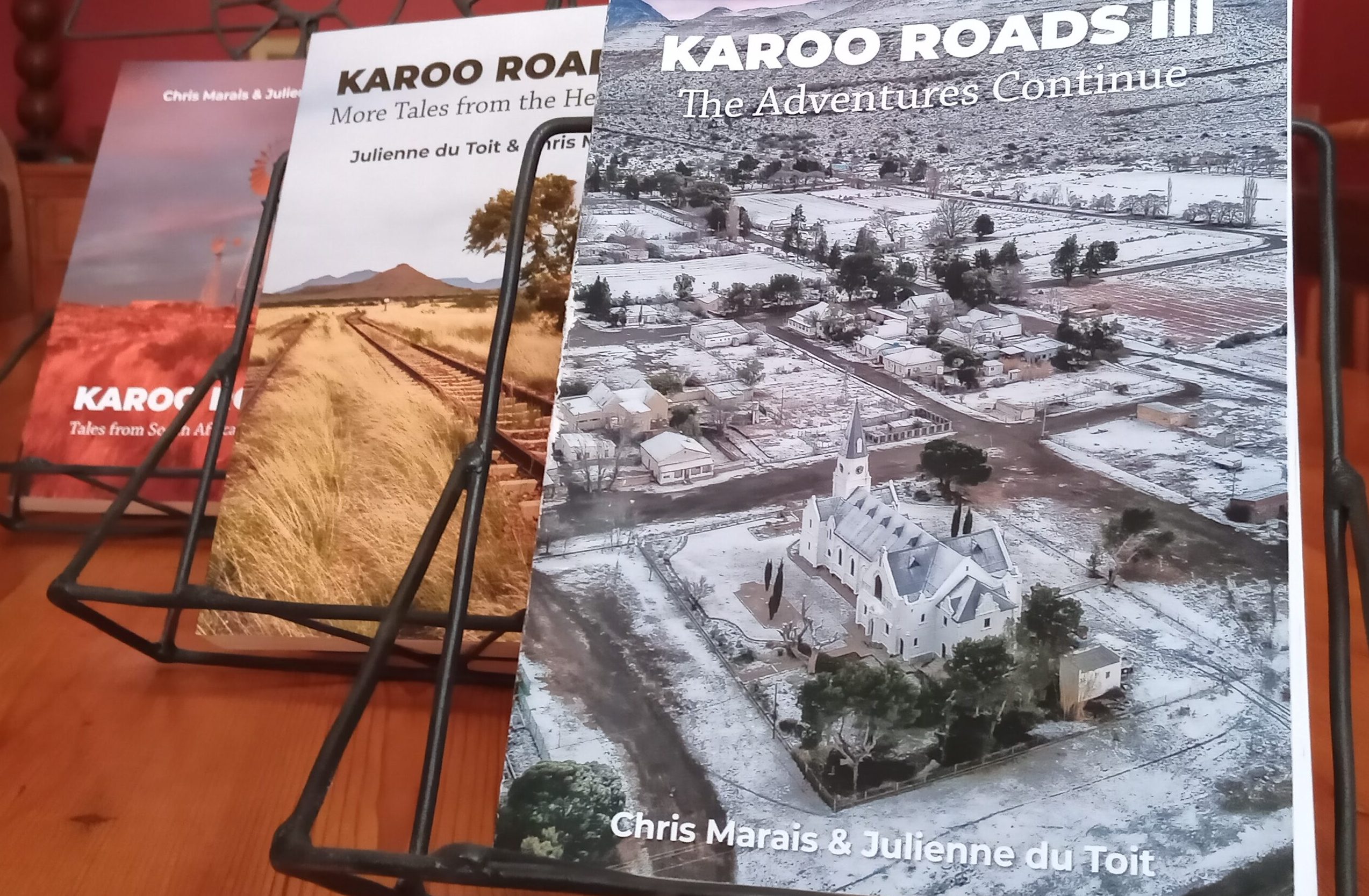
‘Karoo Roads’ Collection. Image: Chris Marais
This is an extract from Karoo Roads I – Tales from South Africa’s Heartland, by Chris Marais and Julienne du Toit. For an insider’s view on life in the Dry Country, get the three-book special of Karoo Roads I, Karoo Roads II and Karoo Roads III (illustrated in black and white) for only R800, including courier costs in South Africa. For more details, contact Julie at [email protected]
To order a copy of Yeomen of the Karoo (limited first edition supplies) at R570 (including courier service) contact Dr Arnold van Dyk at [email protected]








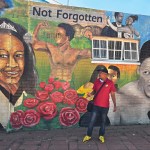








 Become an Insider
Become an Insider
Does make me wonder at how so much could be achieved during a short time in a remote war when today we accept that remote places are permanently ill served.
Fascinating. I wonder if the Commonwealth War Graves Commission knows about the Deelfontein graveyard?
Delightful article, thank you – it makes me want to visit the place
Fantastic article, thank you. Makes me feel like packing my old bakkie and heading out for parts unknown.